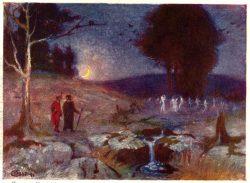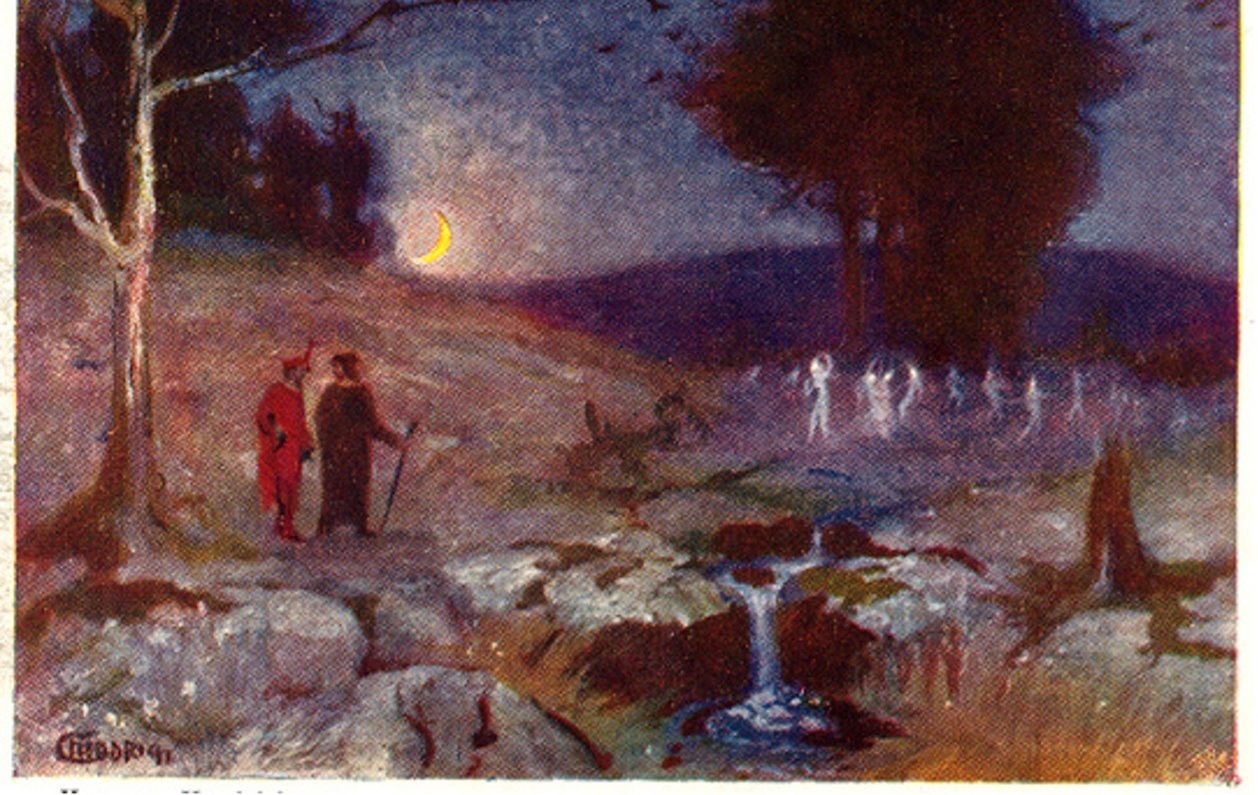Will-o’-the-wisps: Mythical creatures or a science-backed trick?
Scientists at Stanford University may have uncovered the truth behind will-o’-the-wisps, which have been a scientific mystery for years. Will-o’-the-wisps, or ignis fatuus in Latin, have been associated with supernatural legends and myths, and are often seen in swamp areas or marshes. However, recent research by Richard Zare and his colleagues suggests a more logical explanation: the combustion of gases produced by decaying organic matter in water.
Richard Zare and his colleagues observed a process they call ‘microlightning’, where tiny electric sparks between bubbles of methane and air in water cause a flash that may be powerful enough to ignite the gas, explaining the mysterious swamp lights.

Hermann Hendrich, ‘The Will-o’-the-Wisp Dance / Wikimedia Commons
“We continue to discover things about water,” Zare told New Scientist in an interview. “No one thinks of water related to fire. They think water puts out fire. They’re not telling you with water, I can get a spark and set something on fire. This is new.”
The scientists had already discovered that electric sparks could be generated in small water droplets, building up charges. Building on this, they theorised that a similar effect could be possible in methane bubbles. They experimented by sending microbubbles of gas and air through water, observing the collisions using a photon counter and camera – this captured how the bubbles would produce a flash.
Will-o’-the-wisps have been a source of mystery and legend across many different cultures, typically described as either ghosts, fairies, or spirits
Interestingly, flashes occurred even when only air was injected, suggesting that the microlightning was a result of the charge rather than combustion. Although, the presence of the gas bubbles increased the amount of light and heat, with consistent signatures of compounds only produced by burning methane.
The frequencies of light recorded by Zare and his colleagues found that the sparks were powerful enough to ignite methane gas and produce these flashes of light, highlighting why many might mistake these microbubbles for the supernatural ignis fatuus.
Will-o’-the-wisps have been a source of mystery and legend across many different cultures, typically described as either ghosts, fairies, or spirits. In the UK, they were said to have lured travellers off safe paths. In Japan, they are known as hitodama and are thought to be wandering souls of the dead. In the American South, some stories have described them as the spirits of lost children.
However, recent scientific theories suggest that they can instead be naturally explained by the combustion of gases found in waterlogged, low-oxygen environments.
Zare’s research suggests that tiny sparks of lightning jumping between microbubbles could be igniting the gas. The bubbles create sparks of electricity that ignite the gas and create flashes of light
Bogs are often rich in methane as microbes break down matter anaerobically, producing large quantities of the gas. Peat piles up, trapping the methane and slowing decomposition of matter. The ‘swamp gas’, as it’s known, is highly flammable, and scientists have theorised that these flickers of light could come from this spontaneous ignition.
Zare’s research suggests that tiny sparks of lightning jumping between microbubbles could be igniting the gas. These bubbles create sparks of electricity that ignite the gas and create flashes of light; however, it is unclear exactly what ignites the gases. According to New Scientist, causes such as static electricity or lightning have previously been suggested but not proven.
According to Science, Zare also suggests that these microbubbles – which would have been common early in the Earth’s life – may have provided the sparks that created essential biomolecules that were necessary for the development of early life.
James Anderson, a Harvard scientist who was not part of the research, told Science: “This is really an interesting step forward”, and that the new discovery “reveals a mechanism by which chemical reactions can be initiated.”
Ignis fatuus was first speculated by Alessandro Volta, an Italian physicist whose name was lent to the volt (the SI unit for potential difference). Volta suggested, says Zare, that “it was the lightning causing the ignis fatuus, and in some sense he was right.” According to the research, the ‘lightning’ comes from the chemical reactions taking place in the microbubbles.
This research is the first lab-tested experiment that links natural swamp conditions to spontaneous cold fire. While this research has given us a possible explanation for where the story of these creatures may have come from, who’s to say the will-o’-the-wisps aren’t real? These findings will surely open up a path for further research.

Comments (1)
a very fun read 🙂